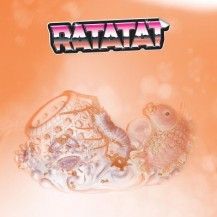Ratatat’s “LP4”
Sarah is nuts for Ratatat’s new record, “LP4”!
Guest Writer
9.8
out of 10
LP4
June 8, 2010
Slow buzzing white noise and horns open Ratatat’s LP4 (and if you’ve been watching the 2010 World Cup, it might sound all too familiar). The slow build up lasts just over half a minute before you are transported into an amalgamation of change hitting a glass, reverb, repeating baseline (and other noises I still haven’t been able to identify, even on the seventh listen), all rendered in a way that’s reminiscent of Pink Floyd’s classic “Money.”
Ratatat continues their reputation for producing instrumental electronic jams fit for dancing, relaxing, or road tripping. The intro track, “Bilar,” is full of moody undertones and melodies. It bends low, slows, grows somber and heady before the drums start in again and the mood of the song is lifted like a heart is lifted after a break. “Bilar” ends on a light, bubbly note and the song blurs into the following song, “Drugs.” They meet with a tinny German voice continuously overlaid at the end and beginning of each track.
And really, it is only this voice, and slow fade out and in, that marks the end of “Bilar” and the beginning of “Drugs”. Otherwise, they are knit tightly together in pace and mood, which is a statement representative of the album as a whole. While they all are capable, strong individual tracks, they are bonded together in a continuous journey–and though no two days of the journey are the quite the same, it is still the same journey. It is the listener, like all the Jack Kerouacs before him, that experiences the road and its eccentricities uniquely and individually.
There are some heavy, violin laden, voice synthesizer ridden sections that are as beautiful as they are overwhelming (like Ratatat’s “Neckbrace”). Where “Neckbrace” inundates you in the layers upon layers of noise, melody and synth, the following track “We Can’t Be Stopped” settles, eases, and begins with a simple rise and fall journey across the piano. It later adds wafting violin and other sounds (guitar, birds tweeting, creaking doors) to create a soft two minutes of relaxation.
And while “Neckbrace” and “We Can’t Be Stopped” are very different, they, like the album, are held together by the style in which they are presented. Each weaves together such different sounds and instruments, presents such different vibes, emotions and paces, that it is impossible to compare them side by side. However, each song is a patterned in a similar style, with a perfect blend of instruments layered over voices, found audio, and synthesizers.
Give a chef the same fifteen ingredients and he could serve up hundreds of different meals. So Ratatat does with this album. You can tell it’s Ratatat, but the presentation of the ingredients differ in taste, texture and theme with each meal of a song–varied in their form but equally delicious and musically nutritious. Serve yourself up a heaping helping.
